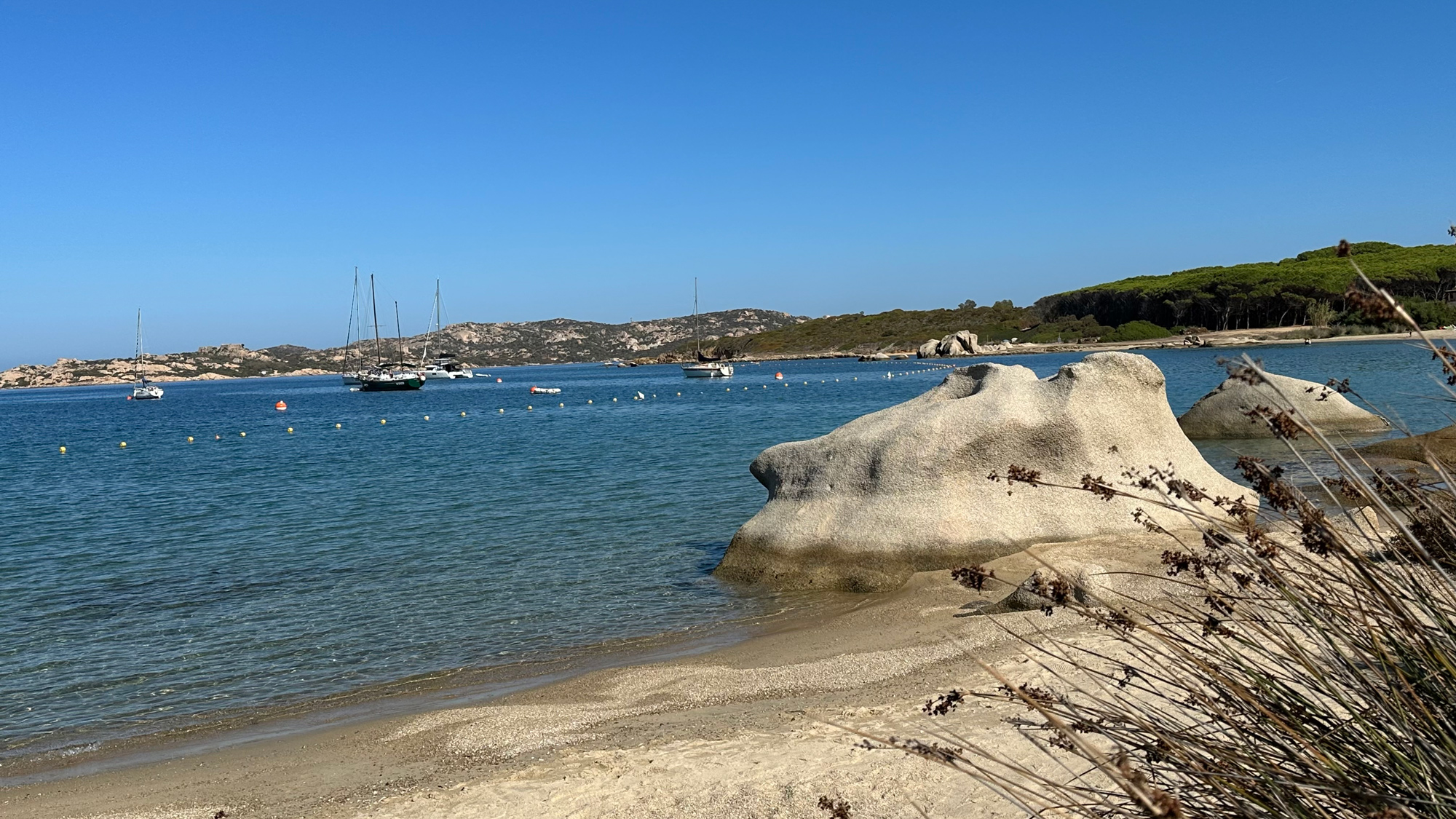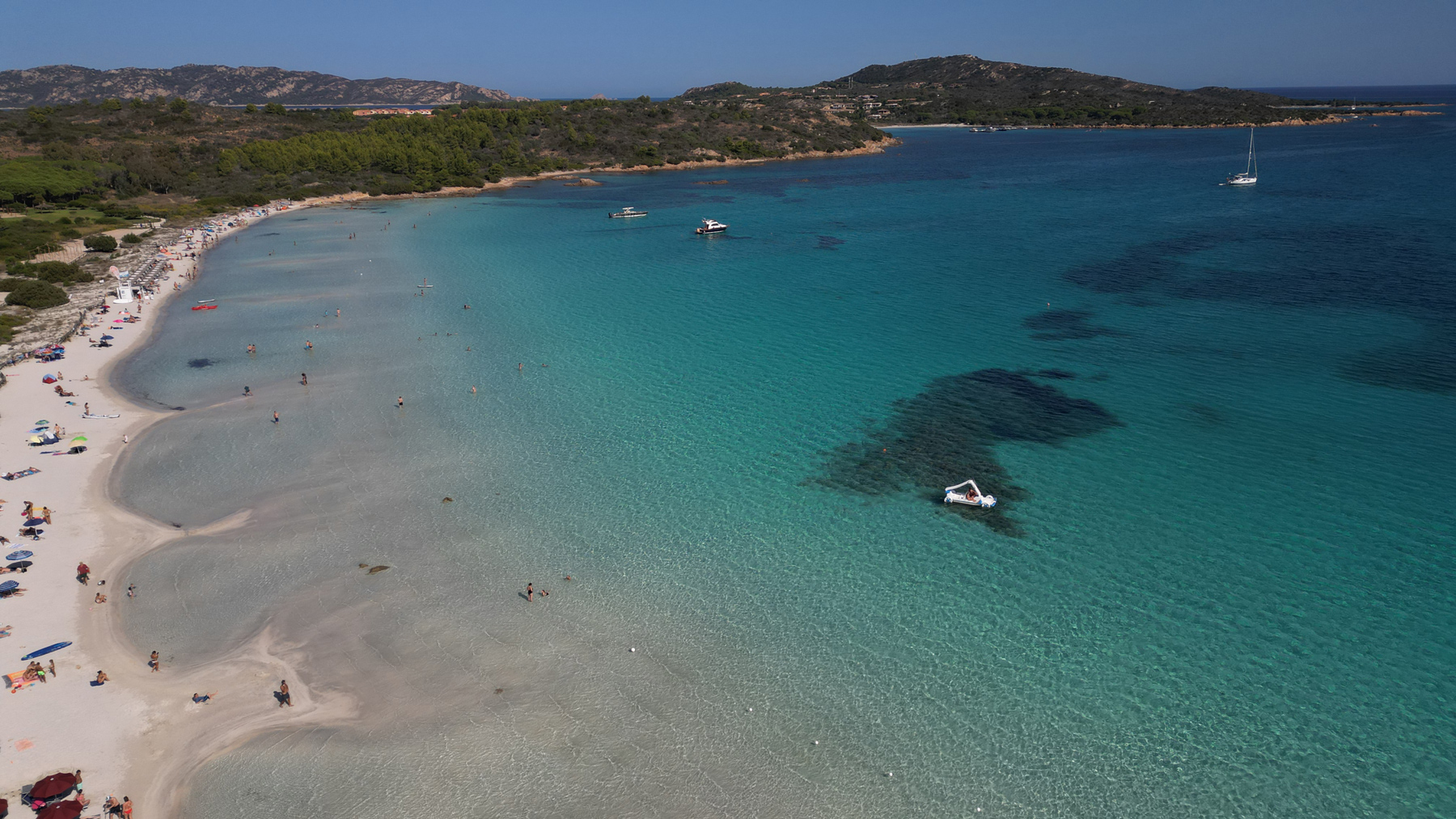Sardinia
Sailors have appreciated Sardinia's strategic location in the western Mediterranean since ancient times. Where Odysseus is said to have moored, sailors and boat owners today also find a fine berth in over 30 large and small marinas.
Today, Sardinia's appeal lies primarily in its fabulous, crystal-clear turquoise water, the color of which has its own name, "Smeraldino" - and the water quality is one of the best in the entire Mediterranean. A varied coastline of over 1.800 kilometers, with countless bays, leaves you spoilt for choice when it comes to dropping anchor.
Sardinia - moorings all year round and for every occasion
Sardinia really can meet every requirement. Whether leisure skippers, charter sailors, motorboats or luxury yachts: everyone will find the right service and a good nautical infrastructure.
If you are looking for the perfect daytime mooring for your charter yacht and also want to take a chic stroll and experience the dolce vita and nightlife, head for one of the lively marinas such as Porto Cervo or Poltu Quatu. If you prefer a quieter vacation, head to Villasimius or Teulada. Seasonal moorings are few and far between, as day moorings are preferred in busy areas - and are correspondingly expensive. Year-round moorings, on the other hand, are often cheaper, excluding the two months of the main season. Port towns that are inhabited all year round, such as Alghero, Castelsardo, Olbia, Arbatax or Calasetta, are suitable for wintering.
On transit to the Atlantic or to the east or north, there are transit moorings for a short stop in the larger (yet clearly laid out) port towns such as Alghero, Olbia or Cagliari - for shopping at the local weekly market or in the large supermarket, getting spare parts or doing work. Many marinas are also home to providers of dry berths, shipyards and various nautical service providers.
(Season) Great conditions all year round
The sailing and charter season in Sardinia starts in May/June, runs until around October and peaks in July and August (also in terms of price). Nautical traffic is mainly concentrated in the north-east: the famous Costa Smeralda and the Maddalena archipelago with its proximity to Corsica are real magnets - even for the world's largest mega yachts. Both harbors and anchorages are full here in high season.

(Geography / Culture) Sardinia - diverse from the coast to the island's interior
The coastline is generally rugged, rocky and jagged; there are many sharp cliffs under the water. However, this rugged beauty is repeatedly interrupted by long, pleasant sandy beaches and wide, crystal-clear anchor bays.
The coasts face perfectly in the four cardinal directions and could not be more different:
The west is exposed to the "mar di fuori" (the "sea from outside"). In strong westerly winds, a wild surf makes anchoring difficult; at the same time, the harbor density is very low. Alghero's marina is picturesquely situated below the old town with its thick, medieval city walls and towers, built by Catalan occupiers.
The east side is mostly quiet and peaceful in the shelter of the mountains, which rise to over 1,800 meters in the interior of the island and whose foothills in the Golfo di Orosei form fabulously beautiful contrasts with the Tyrrhenian Sea.
The north competes with the neighboring island of Corsica for the favor of the sea at the often stormy Bocche di Bonifacio. On clear and calm days, the area between the islands of Asinara and Tavolara is a sailing dream. Together with the Costa Smeralda, Olbia sees itself as a cosmopolitan gateway to the island. The small town underlines this claim with the most important ferry port and is easy to reach by plane during the season.
The south is closer to warm Africa than Italy. In the island capital of Cagliari, North African flair even wafts across the wide "Gulf of Angels". The city is older than Rome and offers a high quality of life with art and cultural events throughout the year. The convenient airport connections, several beautiful marinas within a 15-kilometre radius and a solid nautical infrastructure are particularly appreciated by long-term and winter moorings.

(Wind) The wind around Sardinia
In Sardinia and almost everywhere in the Mediterranean, every wind is called by its name (except in official weather maps and port information). Starting with the wind from the north: Tramontana. Continuing clockwise around the compass rose: Grecale (north-east), Levante (east), Scirocco (south-east), Mezzogiorno (south), Libeccio (south-west), Ponente (west) and the Maestrale from the north-west.
Rough rule of thumb: The winds from the northern quadrants are rough, erratic and gusty, while those from the south are somewhat more even, but wavy and strong. A special feature is the Maestrale, which arrives from the south of France (called Mistral there) and picks up strongly in the Bocche di Bonifacio between Sardinia and Corsica. When the mistral is strong, even some ferries stay in port and the area is definitely for advanced sailors.
(Long distance) For long-distance sailors and transients
Sardinia is isolated (except for the 12-nautical-mile cat's jump to Corsica): The distances to the European neighborhood are astonishingly far. Even the Italian mainland is around 150 (Rome) or 200 (Naples) nautical miles away. In fact, the nearest mainland is in North Africa - it is only 90 nautical miles from Cagliari to Tunisia. The Adriatic Sea and the eastern Mediterranean with Greece, on the other hand, are around 1,000 miles away, and Turkey is 1,500 miles away.
So it's all the better that Sardinia is such a versatile, even paradisiacal destination that many people don't want to leave.
Today, Sardinia's appeal lies primarily in its fabulous, crystal-clear turquoise water, the color of which has its own name, "Smeraldino" - and the water quality is one of the best in the entire Mediterranean. A varied coastline of over 1.800 kilometers, with countless bays, leaves you spoilt for choice when it comes to dropping anchor.
Sardinia - moorings all year round and for every occasion
Sardinia really can meet every requirement. Whether leisure skippers, charter sailors, motorboats or luxury yachts: everyone will find the right service and a good nautical infrastructure.
If you are looking for the perfect daytime mooring for your charter yacht and also want to take a chic stroll and experience the dolce vita and nightlife, head for one of the lively marinas such as Porto Cervo or Poltu Quatu. If you prefer a quieter vacation, head to Villasimius or Teulada. Seasonal moorings are few and far between, as day moorings are preferred in busy areas - and are correspondingly expensive. Year-round moorings, on the other hand, are often cheaper, excluding the two months of the main season. Port towns that are inhabited all year round, such as Alghero, Castelsardo, Olbia, Arbatax or Calasetta, are suitable for wintering.
On transit to the Atlantic or to the east or north, there are transit moorings for a short stop in the larger (yet clearly laid out) port towns such as Alghero, Olbia or Cagliari - for shopping at the local weekly market or in the large supermarket, getting spare parts or doing work. Many marinas are also home to providers of dry berths, shipyards and various nautical service providers.
(Season) Great conditions all year round
The sailing and charter season in Sardinia starts in May/June, runs until around October and peaks in July and August (also in terms of price). Nautical traffic is mainly concentrated in the north-east: the famous Costa Smeralda and the Maddalena archipelago with its proximity to Corsica are real magnets - even for the world's largest mega yachts. Both harbors and anchorages are full here in high season.
The rest of the island is relaxed, even in the summer season. Outside of the low season, Sardinia is an island where you can experience real privacy and be at one with nature.

(Geography / Culture) Sardinia - diverse from the coast to the island's interior
The coastline is generally rugged, rocky and jagged; there are many sharp cliffs under the water. However, this rugged beauty is repeatedly interrupted by long, pleasant sandy beaches and wide, crystal-clear anchor bays.
The coasts face perfectly in the four cardinal directions and could not be more different:
The west is exposed to the "mar di fuori" (the "sea from outside"). In strong westerly winds, a wild surf makes anchoring difficult; at the same time, the harbor density is very low. Alghero's marina is picturesquely situated below the old town with its thick, medieval city walls and towers, built by Catalan occupiers.
The east side is mostly quiet and peaceful in the shelter of the mountains, which rise to over 1,800 meters in the interior of the island and whose foothills in the Golfo di Orosei form fabulously beautiful contrasts with the Tyrrhenian Sea.
The north competes with the neighboring island of Corsica for the favor of the sea at the often stormy Bocche di Bonifacio. On clear and calm days, the area between the islands of Asinara and Tavolara is a sailing dream. Together with the Costa Smeralda, Olbia sees itself as a cosmopolitan gateway to the island. The small town underlines this claim with the most important ferry port and is easy to reach by plane during the season.
The south is closer to warm Africa than Italy. In the island capital of Cagliari, North African flair even wafts across the wide "Gulf of Angels". The city is older than Rome and offers a high quality of life with art and cultural events throughout the year. The convenient airport connections, several beautiful marinas within a 15-kilometre radius and a solid nautical infrastructure are particularly appreciated by long-term and winter moorings.
Away from the coast lies the original Sardinia, historically located in the interior of the island. The country's culture impresses with ancient traditions, archaeological treasures, culinary specialties, excellent wine and deeply rooted hospitality. Active country walks in the strong nature, which combines mountain and sea as well as plains and forests, are a nice alternative - even if there is too much or no wind.

(Wind) The wind around Sardinia
In Sardinia and almost everywhere in the Mediterranean, every wind is called by its name (except in official weather maps and port information). Starting with the wind from the north: Tramontana. Continuing clockwise around the compass rose: Grecale (north-east), Levante (east), Scirocco (south-east), Mezzogiorno (south), Libeccio (south-west), Ponente (west) and the Maestrale from the north-west.
Rough rule of thumb: The winds from the northern quadrants are rough, erratic and gusty, while those from the south are somewhat more even, but wavy and strong. A special feature is the Maestrale, which arrives from the south of France (called Mistral there) and picks up strongly in the Bocche di Bonifacio between Sardinia and Corsica. When the mistral is strong, even some ferries stay in port and the area is definitely for advanced sailors.
(Long distance) For long-distance sailors and transients
Sardinia is isolated (except for the 12-nautical-mile cat's jump to Corsica): The distances to the European neighborhood are astonishingly far. Even the Italian mainland is around 150 (Rome) or 200 (Naples) nautical miles away. In fact, the nearest mainland is in North Africa - it is only 90 nautical miles from Cagliari to Tunisia. The Adriatic Sea and the eastern Mediterranean with Greece, on the other hand, are around 1,000 miles away, and Turkey is 1,500 miles away.
So it's all the better that Sardinia is such a versatile, even paradisiacal destination that many people don't want to leave.